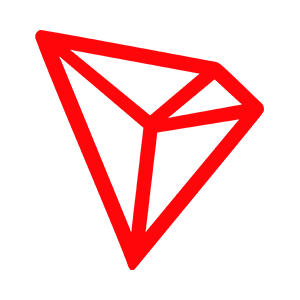
TRON
TRON Price Converter
TRON Information
TRON Markets
TRON Supported Platforms
| BPTRX | BEP20 | BNB | 0x85eac5ac2f758618dfa09bdbe0cf174e7d574d5b | 2021-04-06 |
| BTRX | ERC20 | ETH | 0x50327c6c5a14DCaDE707ABad2E27eB517df87AB5 | 2022-02-14 |
| BTRX | BEP20 | BNB | 0xce7de646e7208a4ef112cb6ed5038fa6cc6b12e3 | 2022-02-15 |
| BTRX | BRC20 | BTT | 0xEdf53026aeA60f8F75FcA25f8830b7e2d6200662 | 2021-12-10 |
| TRXV1 | ERC20 | ETH | 0xf230b790e05390fc8295f4d3f60332c93bed42e2 | 2017-08-28 |
About TRON
TRON is a public blockchain that supports smart contracts through the TRON Virtual Machine (TVM). Its native coin, TRX, is the base unit of value on the network. Developers deploy and run applications on TRON via TVM, which defines how contract code executes and how state changes are applied across the network.
TRX powers the network’s resource model. Every transaction consumes Bandwidth (for basic transfers and data) and smart-contract execution consumes Energy. Users receive a small daily Bandwidth allocation; additional Bandwidth or Energy can be obtained by staking (also called “freezing”) TRX. If an account lacks sufficient resources, TRX is burned at protocol-defined rates to cover usage, which makes fees predictable at the protocol level.
Staking TRX also grants TRON Power (voting rights) used to participate in governance by voting for Super Representatives who produce blocks. The mechanics of staking and TRON Power issuance are defined in TRON’s docs and tools used by the community (e.g., TRONSCAN’s Stake 2.0). See the governance section for details.
Historically, TRX began as an ERC-20 token and migrated to TRON’s independent mainnet in 2018, with the genesis block on 25 June 2018. Official migration notices and timelines were published by the TRON Foundation at the time.
For how TRON’s contract environment relates to Ethereum (EVM), see the “Is TRON EVM-compatible…” section; for staking, validators and elections, see the DPoS and Super Representatives sections.
Network resources and fees: TRX is used to obtain network resources, Bandwidth (transaction bytes) and Energy (smart-contract compute). Users stake TRX to receive these resources; if an account lacks enough, TRX is burned at protocol-defined rates to cover execution.
Governance and validator voting: Staking TRX grants TRON Power (TP), which is used to vote for Super Representatives (validators). Voters may receive rewards distributed in TRX under network rules and SR policies. See the governance section for mechanics.
Payments and value transfer: TRX functions as the native medium for peer-to-peer transfers and can be used for payments within and outside the TRON ecosystem, including merchant and wallet integrations highlighted by the project.
Smart-contract interaction and dApp usage: All contract deployment and invocation on TRON consumes Energy; users typically stake TRX to obtain Energy or let TRX be burned if limits are exceeded. Developers can set per-transaction fee limits (feeLimit) for cost control.
DeFi collateral and market utility: Official docs note TRX is issued as network rewards and is commonly used as collateral in lending markets and as a unit of account in NFT marketplaces on TRON. Specific DeFi protocols are covered in their own sections.
Account activation and resource delegation: Creating accounts via CreateAccount requires a protocol-defined fee; activation by transfer consumes Bandwidth and may burn TRX if resources are insufficient. Users can also delegate staked resources (Energy/Bandwidth) to other accounts.
Token issuance and ecosystem operations: Certain on-chain operations require TRX payments—for example, issuing a TRC-10 token carries a one-time TRX cost set by network rules. For issuance standards, see ‘Is TRON (TRX) a coin or a token?